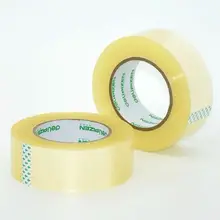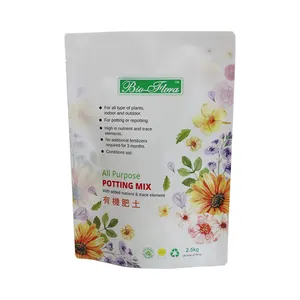Top soil plastic bags are specialized storage solutions designed to contain and protect various types of soil used in horticulture, landscaping, and agriculture. These bags are engineered to maintain the integrity of the soil they hold, ensuring that the contents remain free from contaminants and are preserved in optimal condition for use. With a focus on durability and functionality, top soil plastic bags come in various designs and materials to suit different soil types and applications.
Types and Varieties of Top Soil Plastic Bags
The types of top soil plastic bags available cater to a wide range of needs. Stand-up pouches are popular for retail due to their shelf presence and ease of use. Side gusset bags are preferred for larger quantities, offering stability and efficiency in storage. Bags with valves are revolutionary for soils that need to breathe or release gas, such as those with organic matter that may ferment. Vacuum bags are used for sterile applications, ensuring no contaminants enter the soil after packaging. Square bottom bags are the workhorses of the industry, capable of standing upright and handling significant weight, making them ideal for bulk soil sales. Each type is designed with specific soil characteristics in mind, from lightweight potting mixes to dense, moisture-rich topsoils. The diversity in bag types ensures that there is a packaging solution for every type of soil product, whether it needs to be displayed attractively on a store shelf or shipped efficiently in bulk.
Materials and Structure of Top Soil Plastic Bags
Delving into the structure of top soil plastic bags, we find a sophisticated assembly of components. The bags typically feature a multi-layer construction, with each layer serving a specific function. The outer layer often consists of a durable material like BOPP, which provides strength and a surface suitable for high-quality printing. The middle layer might include VMPET to act as a barrier against light and moisture, while the innermost layer, usually made of PE, is safe for contact with the soil. This layered approach ensures the bags are not only robust but also have the necessary properties to protect the soil's quality. The physical components such as zippers, spouts, or valves are added depending on the functionality required. For instance, zippers are included for reusability, spouts for controlled pouring, and valves for degassing. The operation of these components is straightforward yet vital for the bag's performance, as they provide ease of access, maintain freshness, and extend the soil's usability.
Materials and Their Properties
The choice of materials for top soil plastic bags is no coincidence. BOPP, or biaxially-oriented polypropylene, is chosen for its toughness and clarity. VMPET, or vacuum metalized PET, is used for its excellent barrier qualities against oxygen, light, and moisture, which is crucial for maintaining soil quality. PE, or polyethylene, is favored for its sealability and chemical resistance. These materials are carefully selected to provide a balance of protection, functionality, and sustainability, ensuring that the bags are not only effective but also align with environmental standards where possible. The benefits of these materials are manifold; they contribute to the bag's overall durability, protect the contents from environmental factors, and offer a reliable packaging solution that businesses can trust.
Business Usages and Industrial Applications
In terms of business usages, top soil plastic bags are indispensable in industries such as agriculture, landscaping, and retail gardening supplies. They are used to package soils that are enriched with nutrients for specific plants, specialty soils for bonsai or succulents, and even substrates for urban gardening. These bags have created business value by enabling companies to extend their market reach through effective branding and by preserving the quality of their products, thereby ensuring customer satisfaction. In consumer electronics, these bags protect sensitive components from moisture, thus preventing damage and extending product life. The versatility of these bags also extends to non-traditional uses such as packaging for pet food, baby food, and even snack foods like potato chips, showcasing their adaptability and the value they add across various market segments.
Functions and Tasks
The functions of top soil plastic bags are multifaceted. They are designed to contain and protect soil, but they also serve as a medium for branding and information dissemination. The bags can be equipped with features like resealable zippers or tear notches, enhancing user convenience and product freshness. They are also tailored to support the weight and volume of the soil, resist punctures and tears, and prevent degradation of the soil due to UV light exposure. The specific tasks these bags perform include facilitating easy transport, enabling efficient storage, and providing a controlled environment for the soil to maintain its quality over time.
Distinct Characteristics and Capabilities
The features that set top soil plastic bags apart include their moisture-proof quality, which is essential for preventing mold growth and maintaining soil texture. The shock-resistant nature of these bags protects the contents from rough handling during shipping and retail stocking. Eco-friendliness is another standout feature, with many bags being recyclable, which appeals to environmentally conscious consumers and businesses looking to reduce their carbon footprint. The unique selling points of these bags lie in their customizability for branding, the variety of functional components like zippers and valves, and their ability to maintain the quality of the soil against various environmental threats.
Benefits and Positive Outcomes
The benefits of using top soil plastic bags are numerous. They provide an effective solution for soil storage and transport, reduce waste by protecting the contents from spoilage, and offer convenience to the end-user. For businesses, these bags mean a longer shelf life for their products, an attractive presentation in retail settings, and the ability to communicate brand values through customizable printing options. The positive outcomes include improved product integrity, enhanced brand recognition, and a boost in consumer trust due to the high-quality packaging.
How to Choose the Right Top Soil Plastic Bag?
Selecting the right top soil plastic bag involves assessing the soil's properties—whether it's lightweight or dense, dry or moist—and the conditions it will be subjected to. For high-moisture soils, a bag with a strong moisture barrier is essential. For organic soils that may emit gases, a bag with a valve would be appropriate. The volume of soil and the method of transportation are also critical considerations, as these will dictate the required strength and durability of the bag. Additionally, the target audience's preferences, such as eco-conscious consumers who prefer recyclable materials, should be taken into account to ensure customer satisfaction and repeat business.
How to Maintain the Quality of Soil in Plastic Bags?
To maintain the quality of soil in plastic bags, it is essential to store them in a cool, dry place away from direct sunlight. The bags should be sealed properly to prevent moisture ingress, and if opened, they should be resealed tightly. For soils that are sensitive to moisture, consider using bags with valves to remove excess air and maintain a dry environment within the bag. Regular checks for any signs of damage to the bags can prevent unexpected spoilage, and keeping the bags off the ground will protect them from pests and potential contaminants.
How to Ensure Eco-Friendliness in Soil Packaging?
Ensuring eco-friendliness in soil packaging involves selecting top soil plastic bags that are recyclable and made from eco-friendly materials. Businesses should encourage consumers to recycle the bags after use and consider the bag's lifecycle in the design phase to minimize environmental impact. Additionally, using bags with minimal layers of material while still protecting the soil can reduce waste and resource consumption. Opting for materials that are not only recyclable but also sourced from responsible suppliers can further enhance the eco-friendliness of the packaging.










































 浙公网安备 33010002000092号
浙公网安备 33010002000092号 浙B2-20120091-4
浙B2-20120091-4